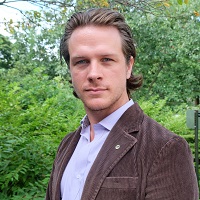Links:
-

-
BA in Psychology: California State University, Northridge
Lab:
147 Wolf Hall 302-831-4895
Email:
dmaisson@psych.udel.edu
Vitae:
cv.pdf
Introduction
As an undergraduate in Los Angeles, I did a B.A. in Psychology with a concentration on Behavioral Neuroscience. I moved back to the New York City area immediately following graduation and volunteered in a brain health lab at the NYU Langone Medical Center, where our work was centered on using imaging techniques to develop means for the early detection of Alzheimer's. From there I spent a year working at UBS Investment Bank, where my job was initially to understand trading decisions and behavior, in the hopes of developing an efficient electronic trading platform. Before coming to Delaware I spent a year working as a Research Scientist at the Family Translational Research Group at NYU. I was a member of the analytics team, wherein my job was to organize and analyze stored physiological data, and produce papers for publication based on the structural models that I generated. My broad interests are rooted in understanding the biological mechanisms that yield thoughts and actions. To that end, I have come to believe that learning and memory are at the epicenter. My objective is to understand the processes that generate those constructs.
Project Description
In the Griffin Lab, we are interested in spatial working memory (SWM), which can be regarded as a proxy for the application of memory for salient events that occur within a given environment. Previous works, from our lab and others, have strongly demonstrated the dependence of SWM on synchronous neuronal activity between the medial prefrontal cortex (mPFC) and the hippocampus (HC). Further, our lab has demonstrated that the ventral midline thalamic nucleus reuniens (Re) is a critical structure in orchestrating this synchrony, and the behavior it underlies. My work focuses on the HC-centric part of the circuit. I currently use optogenetics to selectively silence input to the HC, from the Re and the dorsocaudal medial entorhinal cortex (dcMEC), to isolate their contributions to SWM. I use electrophysiology to record single-cell activity and local field potentials from the HC-Re-MEC circuit to study how the outputs of the Re and the dcMEC, both independently identified for their contributions to components of SWM, interact within the HC. My goal is to generate and test models that elucidate how the different regions of a larger circuit cooperatively and or competitively interact to shape SWM-relevant HC representations.